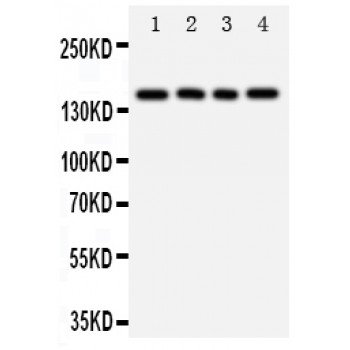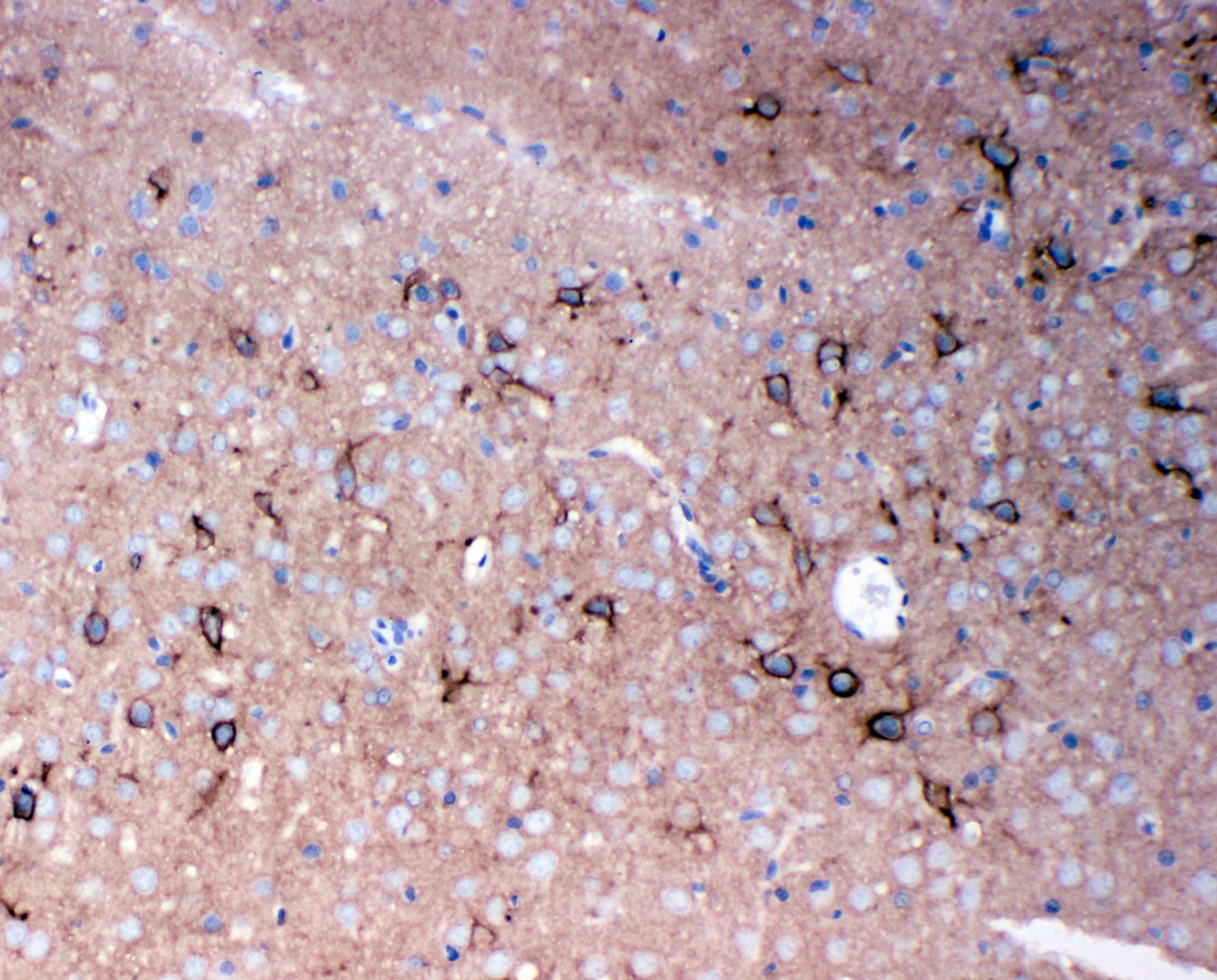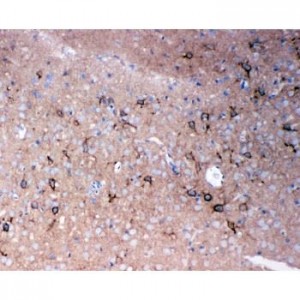More info
Overview
Long Name | Antibody Type | Antibody Isotype | Host | Species Reactivity | Validated Applications | Purification |
| tenascin R | Polyclonal | IgG | Rabbit | Human, Mouse, Rat | IHC-P, WB | Immunogen affinity purified. |
Immunogen | ||||||
| A synthetic peptide corresponding to a sequence at the N-terminus of mouse TNR(104-117aa QTSDHESQVTFTHK), identical to the related rat sequence, and different from the related human sequence by one amino acid. | ||||||
Properties
Form | Lyophilized |
Size | 100 µg/vial |
Contents | Antibody is lyophilized with 5 mg BSA, 0.9 mg NaCl, 0.2 mg Na2HPO4, 0.05 mg Thimerosal and 0.05 mg NaN3. *carrier free antibody available upon request. |
Concentration | Reconstitute with 0.2 mL sterile dH2O (500 µg/ml final concentration). |
Storage | At -20 °C for 12 months, as supplied. Store reconstituted antibody at 2-8 °C for one month. For long-term storage, aliquot and store at -20 °C. Avoid repeated freezing and thawing. |
Additional Information Regarding the Antigen
Gene | TNR |
Protein | Tenascin-R(TN-R) |
Uniprot ID | Q92752 |
Function | Neural extracellular matrix (ECM) protein involved in interactions with different cells and matrix components. These interactions can influence cellular behavior by either evoking a stable adhesion and differentiation, or repulsion and inhibition of neurite growth. Binding to cell surface gangliosides inhibits RGD-dependent integrin-mediated cell adhesion and results in an inhibition of PTK2/FAK1 (FAK) phosphorylation and cell detachment. Binding to membrane surface sulfatides results in a oligodendrocyte adhesion and differentiation. Interaction with CNTN1 induces a repulsion of neurons and an inhibition of neurite outgrowth. Interacts with SCN2B may play a crucial role in clustering and regulation of activity of sodium channels at nodes of Ranvier. TNR-linked chondroitin sulfate glycosaminoglycans are involved in the interaction with FN1 and mediate inhibition of cell adhesion and neurite outgrowth. The highly regulated addition of sulfated carbohydrate structure may modulate the adhesive properties of TNR over the course of development and during synapse maintenance (By similarity). |
Tissue Specificity | Brain specific. |
Sub-cellular localization | Secreted, extracellular space, extracellular matrix. |
Sequence Similarities | Belongs to the tenascin family. |
Aliases | Janusin antibody|MGC149328 antibody|Restrictin antibody|Tenascin R(restrictin, janusin) antibody|Tenascin-R antibody|TENR_HUMAN antibody|TN-R antibody|Tnr antibody |
Application Details
| Application | Concentration* | Species | Validated Using** |
| Western blot | 0.1-0.5μg/ml | Human, Mouse, Rat | AssaySolutio's ECL kit |
| Immunohistochemistry(Paraffin-embedded Section) | 0.5-1μg/ml | Rat Human, Mouse | AssaySolutio's IHC/ICC Detection kit |
AssaySolution recommends Rabbit Chemiluminescent WB Detection Kit (AKIT001B) for Western blot, and Rabbit Peroxidase IHC/ICC Detection Kit (AKIT002B) for IHC(P). *Blocking peptide can be purchased at $65. Contact us for more information

Anti-TNR antibody, ASA-B1894, IHC(P)
IHC(P): Rat Brain Tissue
IHC(P): Rat Brain Tissue

Anti-TNR antibody, ASA-B1894, Western blotting
All lanes: Anti TNR (ASA-B1894) at 0.5ug/ml
Lane 1: Rat Brain Tissue Lysate at 50ug
Lane 2: U87 Whole Cell Lysate at 40ug
Lane 3: HELA Whole Cell Lysate at 40ug
Lane 4: MCF-7 Whole Cell Lysate at 40ug
Predicted bind size: 150KD
Observed bind size: 150KD
All lanes: Anti TNR (ASA-B1894) at 0.5ug/ml
Lane 1: Rat Brain Tissue Lysate at 50ug
Lane 2: U87 Whole Cell Lysate at 40ug
Lane 3: HELA Whole Cell Lysate at 40ug
Lane 4: MCF-7 Whole Cell Lysate at 40ug
Predicted bind size: 150KD
Observed bind size: 150KD



